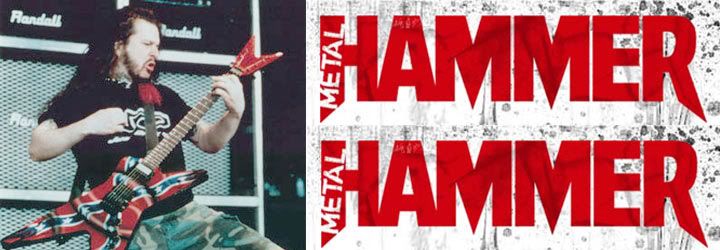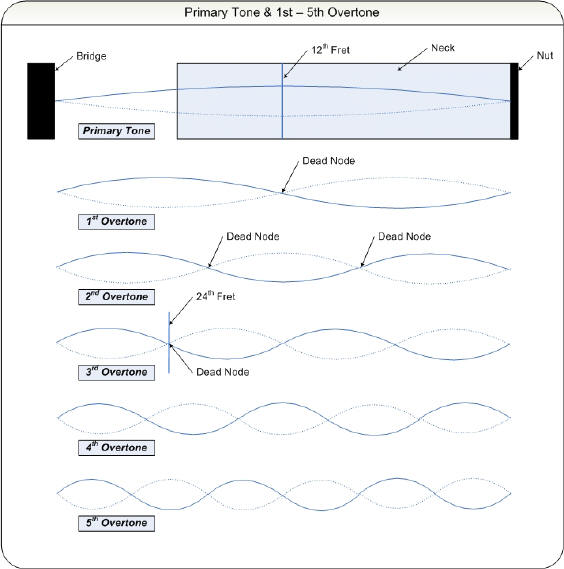Someone asked me years ago "what does digital sound like?".
I like the sound of digital gear and SS gear and tube amps. I think modellers produce great tones but my biggest problem with them is too many options and I'm easily distracted.
Peavey have made great sounding transistor amps with the transtube range for years and there have been people unable to tell the difference from tube amps yet there will always be those who say they can. As for modelling, I would have thought the debate has been settled, modelling can sound like tubes or anything else.
For me the difference is when playing a good tube poweramp vs a SS poweramp and it's something I've A/B'd so many times, even today because I've had both for years. So today I was switching between
a Mooer Blacknight into one side of a Mesa 20/20 going into a Blackstar cab fitted with a Celestion Seventy 80
and a Blackstar HT5R head with a JJ ECC83 going into the same cab
and the emulated out of that HT5R going into a SS powered 1x15 speaker.
The solid state option is the loudest with the most headroom and the widest frequency range and I really like the tone.
The Blacknight into Mesa 20w is also capable of being very loud, much louder than the HT5R and it can push a decent amount of air for that thump you can feel.
However I can dial in very similar tones with the HT5R when both are matched at similar volumes. I think the HT5R does lower volumes a little better and I prefer it at those lower volumes. Both the HT5R power amp and the Mesa power amp are more enjoyable to play through than the SS option. The Mesa cranked is more fun than the others.
Over the years I've done similar tests with lots of different gear. The most enjoyable combo ever that I can remember was at a meet up where we ran my E530 through a Triple Rec's power amp into a 4x12 cab and even through my 2x12 it was still awesome. I haven't come across SS power amp options that are as fun yet but I wouldn't be surprised if one of the higher powered SS options from Peavey gave tubes a run for their money.
I love the little Blackstar HT5R and 112 cab with the mods I've made. It is a hybrid design and it sounds great. My only issue is I want it to have the punch and headroom and volume potential of a bigger tube amp but still sound just as great at low volumes. So I want to try the bigger amps in the Blackstar HT range and see how they compare to what I have but that is the piece of gear I'm looking for. However I'm happy with the HT5R because it sounds great at lower volumes and I can get the headroom with great sound by running the emulated out to powered speakers and the only thing I'm missing out on is that bigger tube amp fun. I'll be selling my Mesa and Mooer pedal soon and that is why I did the test today, I haven't been using those and I wanted to be certain before I put them up for sale.
I used a GSP1101 for years until it died, I replaced my E530 with it because I could get the same tone from it. My regret is digital stuff dies, analogue stuff breaks and can be more easily repaired.
Guitarists everywhere push their tube amps with transistor pedals.
There are heaps of great little modelling amps now that sound great and can even gig and are inexpensive. I've considered getting one plenty of times but I'm afraid that it will one day die and digital stuff doesn't age or hold its value and appeal like tube amps do but I guess my little Blackstar is in the same boat there. It will probably also die and it will never be sought after like an old tube amp.
I like the sound of digital gear and SS gear and tube amps. I think modellers produce great tones but my biggest problem with them is too many options and I'm easily distracted.
Peavey have made great sounding transistor amps with the transtube range for years and there have been people unable to tell the difference from tube amps yet there will always be those who say they can. As for modelling, I would have thought the debate has been settled, modelling can sound like tubes or anything else.
For me the difference is when playing a good tube poweramp vs a SS poweramp and it's something I've A/B'd so many times, even today because I've had both for years. So today I was switching between
a Mooer Blacknight into one side of a Mesa 20/20 going into a Blackstar cab fitted with a Celestion Seventy 80
and a Blackstar HT5R head with a JJ ECC83 going into the same cab
and the emulated out of that HT5R going into a SS powered 1x15 speaker.
The solid state option is the loudest with the most headroom and the widest frequency range and I really like the tone.
The Blacknight into Mesa 20w is also capable of being very loud, much louder than the HT5R and it can push a decent amount of air for that thump you can feel.
However I can dial in very similar tones with the HT5R when both are matched at similar volumes. I think the HT5R does lower volumes a little better and I prefer it at those lower volumes. Both the HT5R power amp and the Mesa power amp are more enjoyable to play through than the SS option. The Mesa cranked is more fun than the others.
Over the years I've done similar tests with lots of different gear. The most enjoyable combo ever that I can remember was at a meet up where we ran my E530 through a Triple Rec's power amp into a 4x12 cab and even through my 2x12 it was still awesome. I haven't come across SS power amp options that are as fun yet but I wouldn't be surprised if one of the higher powered SS options from Peavey gave tubes a run for their money.
I love the little Blackstar HT5R and 112 cab with the mods I've made. It is a hybrid design and it sounds great. My only issue is I want it to have the punch and headroom and volume potential of a bigger tube amp but still sound just as great at low volumes. So I want to try the bigger amps in the Blackstar HT range and see how they compare to what I have but that is the piece of gear I'm looking for. However I'm happy with the HT5R because it sounds great at lower volumes and I can get the headroom with great sound by running the emulated out to powered speakers and the only thing I'm missing out on is that bigger tube amp fun. I'll be selling my Mesa and Mooer pedal soon and that is why I did the test today, I haven't been using those and I wanted to be certain before I put them up for sale.
I used a GSP1101 for years until it died, I replaced my E530 with it because I could get the same tone from it. My regret is digital stuff dies, analogue stuff breaks and can be more easily repaired.
Guitarists everywhere push their tube amps with transistor pedals.
There are heaps of great little modelling amps now that sound great and can even gig and are inexpensive. I've considered getting one plenty of times but I'm afraid that it will one day die and digital stuff doesn't age or hold its value and appeal like tube amps do but I guess my little Blackstar is in the same boat there. It will probably also die and it will never be sought after like an old tube amp.






